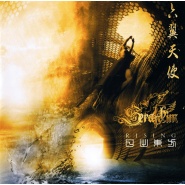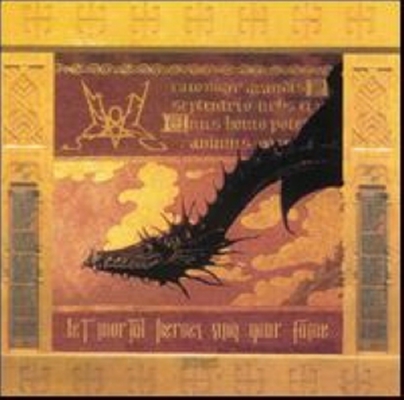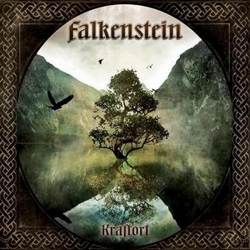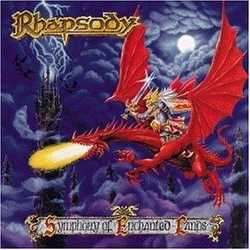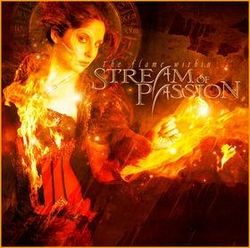Der Blaue Reiter (The Blue Rider) was a group of artists from the Neue Künstlervereinigung München in Munich, Germany. Der Blaue Reiter was a German movement lasting from 1911 to 1914, fundamental to Expressionism, along with Die Brücke which was founded the previous decade in 1905.
Wassily Kandinsky, Franz Marc, August Macke, Alexej von Jawlensky, Marianne von Werefkin, Lyonel Feininger, Albert Bloch and others founded the group in response to the rejection of Kandinsky’s painting Last Judgement from an exhibition. Der Blaue Reiter lacked a central artistic manifesto, but was centred around Kandinsky and Marc. Artists Gabriele Münter and Paul Klee were also involved.
Wassily Kandinsky, Der Blaue Reiter, 1903The name of the movement comes from a painting by Kandinsky created in 1903 (see illustration). It is also claimed that the name could have derived from Marc’s enthusiasm for horses and Kandinsky’s love of the colour blue. For Kandinsky, blue is the colour of spirituality: the darker the blue, the more it awakens human desire for the eternal (see his 1911 book On the Spiritual in Art).
Within the group, artistic approaches and aims varied from artist to artist; however, the artists shared a common desire to express spiritual truths through their art. They believed in the promotion of modern art; the connection between visual art and music; the spiritual and symbolic associations of colour; and a spontaneous, intuitive approach to painting. Members were interested in European medieval art and primitivism, as well as the contemporary, non-figurative art scene in France. As a result of their encounters with cubist, fauvist and Rayonist ideas, they moved towards abstraction.
Der Blaue Reiter organized exhibitions in 1911 and 1912 that toured Germany. They also published an almanac featuring contemporary, primitive and folk art, along with children’s paintings. In 1913 they exhibited in the first German Herbstsalon.
The group was disrupted by the outbreak of the First World War in 1914. Franz Marc and August Macke were killed in combat. Wassily Kandinsky, Marianne von Werefkin and Alexej von Jawlensky were forced to move back to Russia because of their Russian citizenship. There were also differences in opinion within the group. As a result, Der Blaue Reiter was short-lived, lasting for only three years from 1911 to 1914.
In 1923 Kandinsky, Feininger, Klee and Alexej von Jawlensky formed Die Blaue Vier (the Blue Four) group, and exhibited and lectured together in the United States of America in 1924.
An extensive collection of paintings by Der Blaue Reiter is exhibited in the Städtische Galerie in the Lenbachhaus in Munich.
Almanac
Conceived in June 1911, Der Blaue Reiter almanac was published in early 1912, by Piper, Munich: on 11 May, Franz Marc received a first print. A second volume did not materialise, instead of this a second edition was printed in 1914, again by Piper.[1]
Exhibitions
First exhibition
December 18, 1911, the “First exhibition of the editorial board of Der Blaue Reiter” (Erste Ausstellung der Redaktion Der Blaue Reiter) opened at the Heinrich Thannhauser’s Moderne Galerie in Munich, running through the first days of 1912. 43 works by 14 artists were shown: paintings by Henri Rousseau, Albert Bloch, David Burliuk, Wladimir Burliuk, Heinrich Campendonk, Robert Delaunay, Elisabeth Epstein, Eugen von Kahler, Wassily Kandinsky, August Macke, Franz Marc, Gabriele Münter, Jean Bloé Niestlé and Arnold Schönberg, and an illustrated catalogue edited.[2]
From January 1912 through July 1914, the exhibition toured Europe with venues in Cologne, Berlin, Bremen, Hagen, Frankfurt, Hamburg, Budapest, Oslo, Helsinki, Trondheim and Göteborg.[3]
Second exhibition
February 12 through April 2, 1912, the “Second exhibition of the editorial board of Der Blaue Reiter” showed works in “Black & White” (Zweite Ausstellung der Redaktion Der Blaue Reiter, Schwarz-Weiß) at the “New Art” Gallery of Hans Goltz (Neue Kunst Hans Goltz) in Munich.

